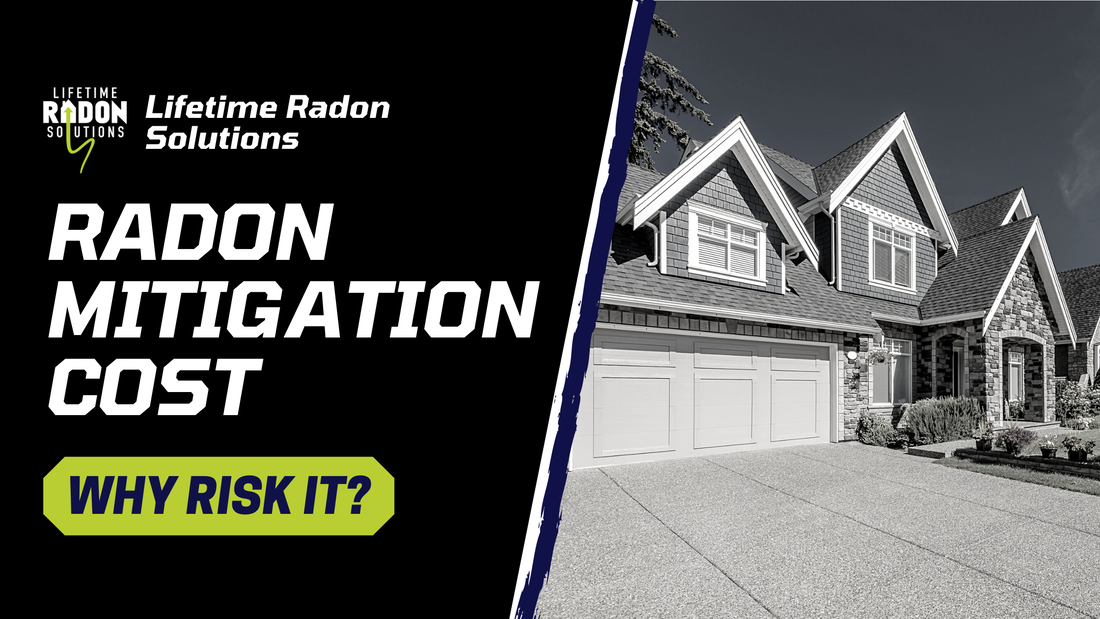|
The cost of radon mitigation is a very popular question among homeowners, realtors, home inspectors and other home service professionals alike.
Like many other home improvement projects, the cost of installing a radon system depends on a lot of different cost factors, including but not limited to, the square footage of the home, the cost of materials and labor associated with the particular install, the difficulty or complexity of the install, whether or not other subcontractors are needed to properly install the system and the cost of any state or local fees, permits or post-mitigation inspections necessary. While sub-slab depressurization is arguably the most effective means of radon mitigation, it is not always the best option for every home or every homeowner. Some instances may call for sub-slab pressurization, whole house pressurization, air to air exchange or other HVAC related adjustments. Many of these alternative forms of mitigation may also carry a much higher energy penalty or a more costly maintenance schedule leading to higher future costs or expensive continual costs. Therefore, it is important to note that understanding the average cost of radon mitigation should include not only the cost of initial installation but also the cost of operating the system after install. In Wisconsin, most radon mitigation systems (sub-slab depressurization systems) will cost between $800-$1,500 to install and typically less than $200/year to operate. According to Home Advisor, Angi’s List and a few other online sources, the average cost of a radon mitigation install in Wisconsin is right around $1,200 and the average operating cost is around $75/year. It is also important to consider radon mitigation costs as they relate to the value a radon system adds to a property. In many instances radon systems significantly increase the value of a home. In some cases radon mitigation may be mandated by a lending institution to secure financing on a home purchase. Radon mitigation is also becoming more and more accepted as one of, if not THE most effective way to prevent radon related health problems. The EPA estimates that radons are responsible for 21,000+ radon-induced lung cancer deaths in the U.S. every year and radon gas is considered the second leading cause of lung cancer in the world after smoking by the World Health Organization (WHO). Ultimately, having a radon mitigation system installed is an important decision to make, and one that should be made after careful consideration of radon risks, radon testing results, local radon levels and the value radon mitigation adds to your home or commercial property. For more information about radon mitigation costs in Wisconsin, please send an email request through our website www.lifetimeradonmitigation.com or call us at (414) 369-4863 for more information about radon risk reduction cost factors and how they relate to radon systems in your area.
1 Comment
9/17/2021 01:15:33 pm
Thank you for the informative article. When considering a radon mitigation system the home owner definitely has to consider the value it adds to the home versus the costs of installation and maintenance. But it also is hard to argue with an individuals health and maybe even life. In other words in some areas where there is shown to be high radon, there is kind of no question as to whether it needs to be installed.
Reply
Leave a Reply. |
AuthorBrian S. Thompson Archives
March 2023
|
- Home
-
Locations
- Lifetime Radon Mitigation Minneapolis
- Lifetime Radon Mitigation Milwaukee
- Lifetime Radon Mitigation Fond du Lac
- Lifetime Radon Mitigation La Crosse
- Lifetime Radon Mitigation Oshkosh
- Lifetime Radon Mitigation Eau Claire
- Lifetime Radon Mitigation Wausau
- Lifetime Radon Mitigation Green Bay
- Lifetime Radon Mitigation Janesville
- Lifetime Radon Mitigation Rochester
-
Services
- Radon Mitigation
- Radon Testing
- FREE Radon Testing
- Crawl Space Encapsulation
- Trichloroethylene (TCE)
- Commercial Radon Testing and Mitigation
-
Local Articles
>
- Lifetime Radon Mitigation Brookfield
- Lifetime Radon Mitigation Madison
- Lifetime Radon Mitigation Plymouth
- Lifetime Radon Mitigation Brooklyn Park
- Lifetime Radon Mitigation West Allis
- Lifetime Radon Mitigation Racine
- Lifetime Radon Mitigation Menomonee Falls
- Lifetime Radon Mitigation Muskego
- Lifetime Radon Mitigation Maple Grove
- Lifetime Radon Mitigation Greenfield
- Lifetime Radon Mitigation Franklin
- Lifetime Radon Mitigation Fitchburg
- Lifetime Radon Mitigation Whitefish Bay
- Lifetime Radon Mitigation Hartford
- Lifetime Radon Mitigation New Berlin
- Lifetime Radon Mitigation Shorewood
- Lifetime Radon Mitigation Blaine
- Lifetime Radon Mitigation Appleton
- Lifetime Radon Mitigation Whitewater
- Lifetime Radon Mitigation Cudahy
- Lifetime Radon Mitigation Germantown
- Lifetime Radon Mitigation Sun Prairie
- Lifetime Radon Mitigation Oak Creek
- Lifetime Radon Mitigation Coon Rapids
- Lifetime Radon Mitigation Beloit
- Lifetime Radon Mitigation Grafton
- Lifetime Radon Mitigation Cedarburg
- Lifetime Radon Mitigation Burlington
- Lifetime Radon Mitigation Caledonia
- Lifetime Radon Mitigation Richfield
- Lifetime Radon Mitigation Duluth
- Lifetime Radon Mitigation Brown Deer
- Lifetime Radon Mitigation Sussex
- Lifetime Radon Mitigation South Milwaukee
- Lifetime Radon Mitigation Middleton
- Lifetime Radon Mitigation Waunakee
- Lifetime Radon Mitigation Watertown
- Lifetime Radon Mitigation Mequon
- Lifetime Radon Mitigation Pleasant Prairie
- Lifetime Radon Mitigation Greendale
- Lifetime Radon Mitigation Wauwatosa
- Lifetime Radon Mitigation Glendale
- Lifetime Radon Mitigation Oregon
- Lifetime Radon Mitigation Port Washington
- Lifetime Radon Mitigation De Pere
- Lifetime Radon Mitigation Pewaukee
- Lifetime Radon Mitigation Oconomowoc
- Lifetime Radon Mitigation Manitowoc
- Lifetime Radon Mitigation Verona
- Lifetime Radon Mitigation Stevens Point
- Lifetime Radon Mitigation Fort Atkinson
- Lifetime Radon Mitigation Beaver Dam
- Lifetime Radon Mitigation Little Chute
- Lifetime Radon Mitigation Onalaska
- Lifetime Radon Mitigation Baraboo
- Lifetime Radon Mitigation Waupun
- Lifetime Radon Mitigation River Falls
- Lifetime Radon Mitigation Marshfield
- FAQ's
- Blog
- Meet the Team
- Contact
- Testimonials
- Privacy
Lifetime Radon Solutions, Inc.
Copyright © 2018
Copyright © 2018


 RSS Feed
RSS Feed